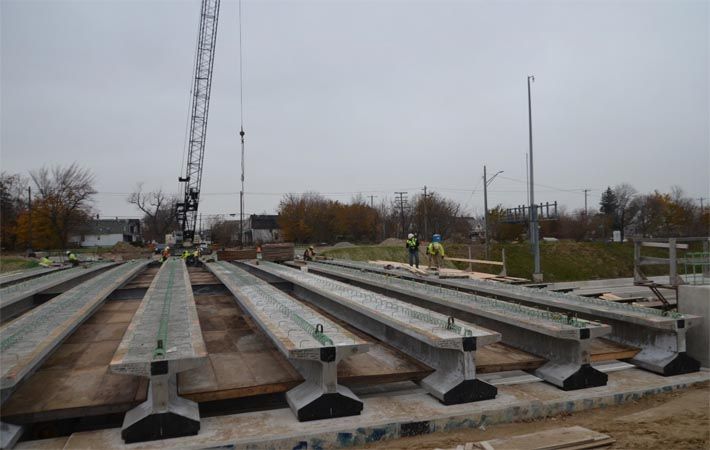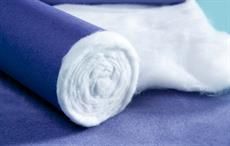
The research has moved from the lab into the field, with projects now being deployed. To understand why carbon fibre is such a game-changing technology, it helps to understand how modern bridges are built to withstand the loads of thousands of vehicles every day and extreme temperature changes for decades, MDOT said in a press release.
"Rusting of steel elements is the leading cause of deterioration in our bridges. Since carbon fibre is non-corrosive, we are eliminating that potential for damage," said MDOT chief bridge engineer Matt Chynoweth. "Using a material that will not corrode is a real game-changer."
“Prestressing concrete with high-strength materials is one method of strengthening concrete. Traditionally, in this method, steel cables are installed inside forms before concrete is poured. The strands are then tensioned with a significant force, causing them to elongate. Once the concrete has gained strength but before it carries loads, the strands are released, compressing the concrete. Any subsequent loads on the beam would then have to overcome this built-in compression to actually stress the beam. Prestressing also reduces or eliminates cracking from concrete shrinkage; it allows thinner and longer spans,” the release added.
MDOT engineers are putting this high-tech material to good use. In 2001, LTU, MDOT and the City of Southfield worked together on the deployment of the first three-span carbon fibre pre-stressed concrete bridge in the country. The Bridge Street bridge was outfitted with a variety of sensors and will be monitored by MDOT until 2025. Since then, more than a dozen bridges have been built throughout the state using carbon fibre components.
MDOT and LTU have conducted years of extensive research on carbon fibre components, looking to optimise the design process and encourage more widespread use. They've subjected beams to 300 freeze-thaw cycles, combined fire/loading events, severe weather, and other trials. Now, bridge designers have the information and specifications they need to predict how carbon fiber reinforced beams will perform under a variety of real-world conditions, as well as design tools for future bridge projects.
These efforts were recognized as among the highest value transportation research projects in the nation. The Research Advisory Committee at the American Association of State Highway and Transportation Officials (AASHTO) named it one of the top 16 research projects of 2020. This research also led to new MDOT and AASHTO design specifications.
A factor limiting the deployment of carbon fiber bridge beams is price. Carbon fibre elements can cost as much as three to four times more than comparable steel elements. But, based on the MDOT/LTU research, they are anticipated to last much longer than steel, so they may prove to be cheaper over the long run.
"We've calculated the 'break-even point' to be about 22 years based on life cycle maintenance," Chynoweth said. "But since the data points only go back about 20 years, this is a theoretical estimate."
Fibre2Fashion News Desk (RR)

